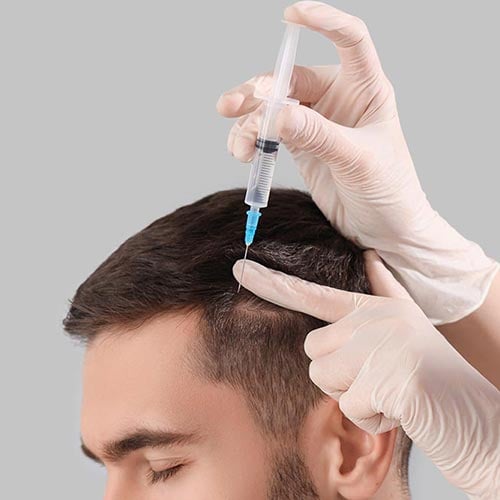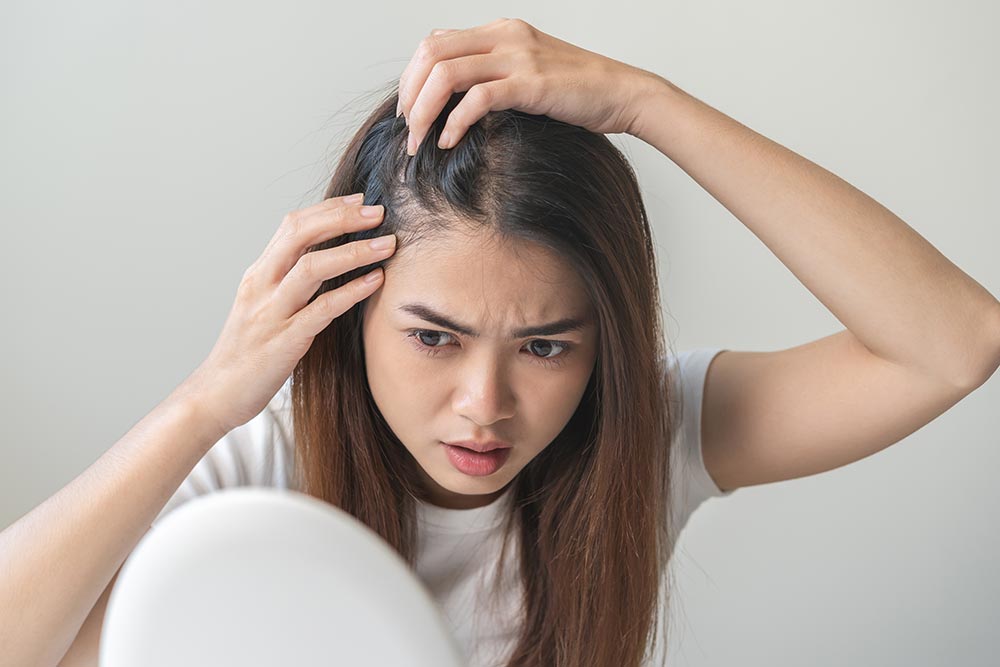Which Season is Best for Hair Transplantation?
Season selection is an important consideration for those planning to undergo a hair transplant. Each season has different effects on the hair transplantation process. Proper timing can support the healing process and lead to more successful results. The most suitable season for hair transplantation may vary depending on an individual’s lifestyle and climatic conditions. Winter and autumn are often highlighted as advantageous seasons for hair transplantation. Details are discussed in the subheadings.


İÇİNDEKİLER
Is Winter an Advantageous Season for Hair Transplantation?
Winter is a frequently preferred season for hair transplantation. Cold weather can positively impact the post-transplant healing process. Additionally, reduced exposure to sunlight during winter helps better protect the scalp. Opting for hair transplantation in winter provides a more comfortable recovery process.

The Impact of Cold Weather on the Hair Transplant Process
Cold weather can support the healing process after hair transplantation. Reduced sweating allows hair follicles to heal more easily. Furthermore, low temperatures minimize the risk of infection and accelerate the crusting process. Winter, as one of the most suitable seasons for hair transplantation, helps prevent scalp irritation.
Post-Hair Transplant Care in Winter
Protecting the scalp from cold is crucial after a winter hair transplant. Breathable hats should be used for this purpose. Additionally, due to low humidity levels, moisturizing products are recommended to prevent scalp dryness. With proper care, undergoing hair transplantation in winter can yield successful results.
The Advantages of Sun Protection During Winter
Reduced sun exposure in winter ensures a smoother healing process after hair transplantation. Protecting the scalp from the negative effects of UV rays promotes the healthy integration of transplanted hair follicles. The most suitable season for hair transplantation is when sunlight exposure is minimal.
Why is Autumn Preferred for Hair Transplantation?
Autumn is one of the most ideal seasons for hair transplantation. The mild weather and reduced intensity of sunlight facilitate the post-transplant process. Additionally, hair transplants performed in autumn allow hair follicles to fully settle by winter. Hair transplantation in autumn offers both short-term and long-term advantages.
Ideal Climatic Conditions for Hair Transplantation in Autumn
The mild climate of autumn supports the healing process after hair transplantation. Moderate temperatures, neither too high nor too low, enable hair follicles to establish themselves healthily. Hair transplantation in autumn ensures a comfortable recovery process and reduces the risk of infection.
Long-Term Advantages of Hair Transplantation in Autumn
Hair transplantation in autumn allows hair follicles to settle during the winter months. This makes it easier to achieve a natural and dense hair appearance by spring. Autumn is regarded as one of the most suitable times of the year for hair transplantation.
Consult Now!
Fill out the form to get detailed information about the hair
transplant process and personalized solutions tailored for you!
Proper Post-Hair Transplant Care in Autumn
Those who undergo hair transplantation in autumn should use products that maintain moisture balance. While mild weather reduces scalp sensitivity, this process should be supported with appropriate care products. Hair transplantation in autumn delivers successful results with regular care and protection.
How Do Seasons Affect the Hair Transplant Recovery Process?
The impact of seasons on the hair transplant recovery process depends on climatic conditions. Winter and autumn are generally preferred for hair transplantation due to lower sunlight intensity and suitable temperatures. In contrast, summer and spring can negatively affect recovery due to heat and sweating. The best season for hair transplantation is when the climate is comfortable.
Challenges of Hair Transplantation in Summer
Undergoing a hair transplant in summer can complicate recovery due to high temperatures and sweating. Sweating increases the risk of infection in hair follicles. Additionally, intense sunlight heightens scalp sensitivity. Therefore, those who undergo a hair transplant in summer must take extra precautions to protect themselves from the sun.

Advantages and Disadvantages of Hair Transplantation in Spring
Spring offers both advantages and disadvantages for hair transplantation. While mild weather supports the recovery process, increased pollen levels may heighten skin sensitivity. Those opting for hair transplantation in spring should be cautious of potential allergic reactions caused by outdoor conditions.
Seasonal Differences and Their Contribution to Hair Transplant Success
Seasonal differences can directly influence the hair transplantation process. For instance, hair transplants performed in autumn and winter often achieve higher graft survival rates. The most suitable season for hair transplantation is when conditions allow hair follicles to heal comfortably.
Which Seasons Are Less Risky for Hair Transplantation?
The recovery process after a hair transplant directly impacts the success of the procedure. Season selection plays a significant role in facilitating or complicating this process. Lower temperatures reduce sweating, allowing hair follicles to anchor more securely. For this reason, winter and autumn are generally considered less risky periods for hair transplantation. The most suitable season for hair transplantation is when the climate protects the scalp.
Challenges of Hair Transplantation During Hot Seasons
Undergoing a hair transplant in summer can be challenging due to high temperatures and sweating. Sweating increases the risk of infection in hair follicles, while exposure to sunlight may irritate the scalp. These factors can hinder the recovery process. The best season for hair transplantation is when these risks are minimized.
Effects of Low-Humidity Weather on Hair Transplantation
Low-humidity weather can lead to scalp dryness after a hair transplant. To address this, it is essential to moisturize the scalp and use protective products. While winter and autumn carry fewer risks for hair transplantation, maintaining moisture balance through proper care is vital. A winter hair transplant, with careful attention, can ensure a smooth recovery process.
Impact of Seasonal Allergies on the Hair Transplant Process
Undergoing a hair transplant during pollen-heavy seasons like spring may increase skin sensitivity due to seasonal allergies. This heightened sensitivity can elevate the risk of infection post-transplant, making proper season selection crucial. Autumn is an ideal time for hair transplantation to avoid such allergic reactions.
How Can Seasonal Hair Care Improve Hair Transplant Results?
Seasonal hair care plays a significant role in the permanence and success of hair transplant results. Each season brings different needs for the scalp, and meeting these needs with the right products supports the recovery process. Once the most suitable season for hair transplantation is chosen, seasonal care practices can help maintain the health of the hair follicles.
Moisturizing Methods for the Scalp in Winter
During winter, low temperatures and humidity levels can lead to scalp dryness. Regular use of moisturizing products is recommended in such cases. Additionally, protecting the scalp from cold with accessories like hats is essential. Winter hair transplantation should be supported with proper care methods.
Sun Protection Tips After Hair Transplantation in Summer
Sun protection is crucial for those undergoing a hair transplant in summer. Using UV-protective sprays and breathable hats is highly recommended. Avoiding direct sunlight exposure ensures healthy integration of the transplanted hair follicles. The best season for hair transplantation is when the risk of sun exposure is minimal.
The Role of Seasonal Hair Care Products in Hair Transplantation
Seasonal hair care products can support the recovery process after hair transplantation. For instance, moisturizing serums and barrier-strengthening lotions protect the scalp from environmental factors. Hair transplants performed in autumn yield better results when complemented with the right products.
Does Seasonal Choice Affect Hair Transplant Costs?
Hair transplant costs can vary based on seasonal factors. Clinics may offer more affordable prices and promotions during low-demand periods. Additionally, scheduling a hair transplant during high-demand periods can be challenging. The most suitable season for hair transplantation is one that provides advantages in both the treatment process and budget.
Advantages of Hair Transplants During Low-Demand Periods
Undergoing a hair transplant during low-demand periods allows for high-quality services at more affordable prices. Winter and autumn are generally known as low-demand seasons, offering broader appointment options. A winter hair transplant can provide economic benefits.
Seasonal Promotions and Hair Transplant Costs
Clinics often organise promotions that reduce hair transplant costs during specific periods. These promotions are typically offered in low-demand seasons such as winter and autumn. Hair transplantation in autumn can be an ideal time to create a budget-friendly treatment plan.
Consult Now!
Fill out the form to get detailed information about the hair
transplant process and personalized solutions tailored for you!
How to Plan a Hair Transplant During High-Demand Periods
For those considering hair transplants during high-demand seasons like summer, advance planning is essential. Securing appointments can be more difficult during these periods, and prices tend to rise. The best season for hair transplantation is a low-demand period, offering advantages in both cost and process management.

